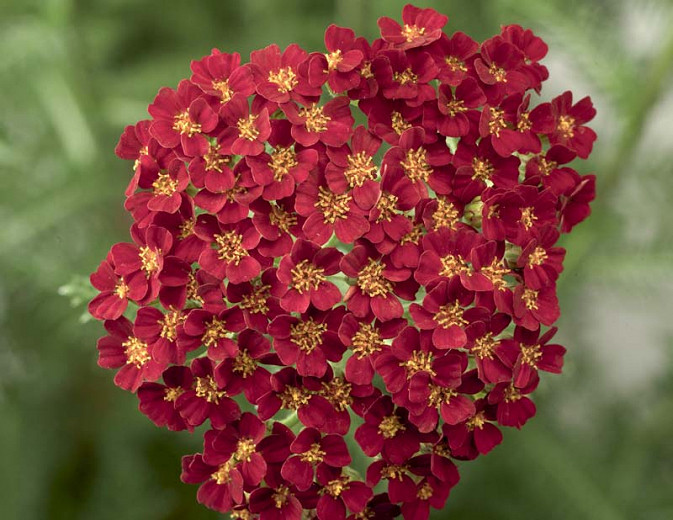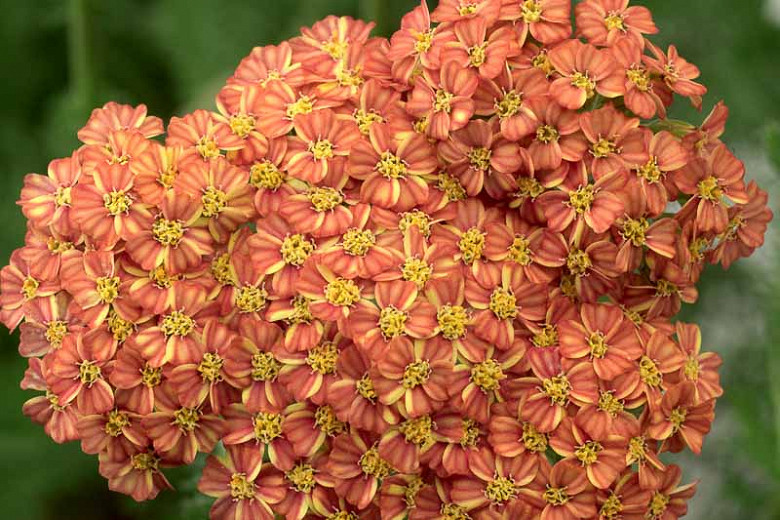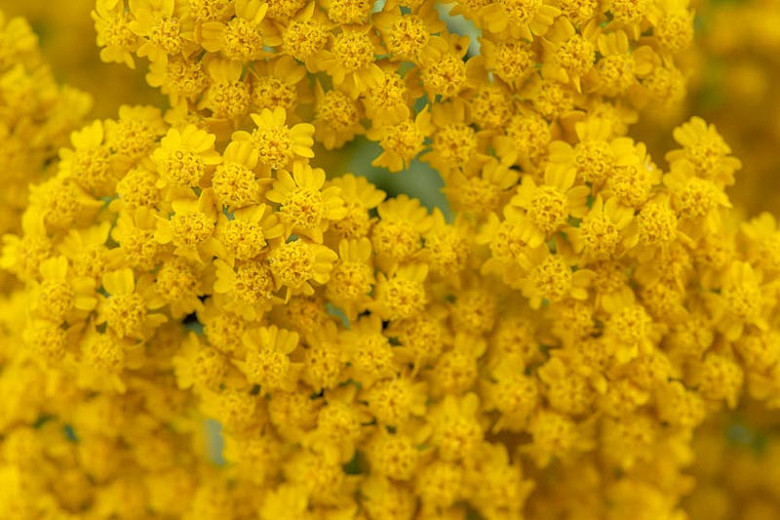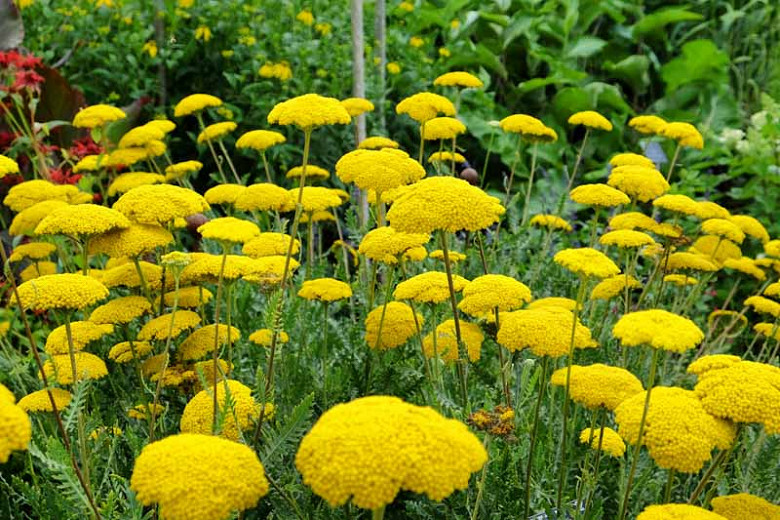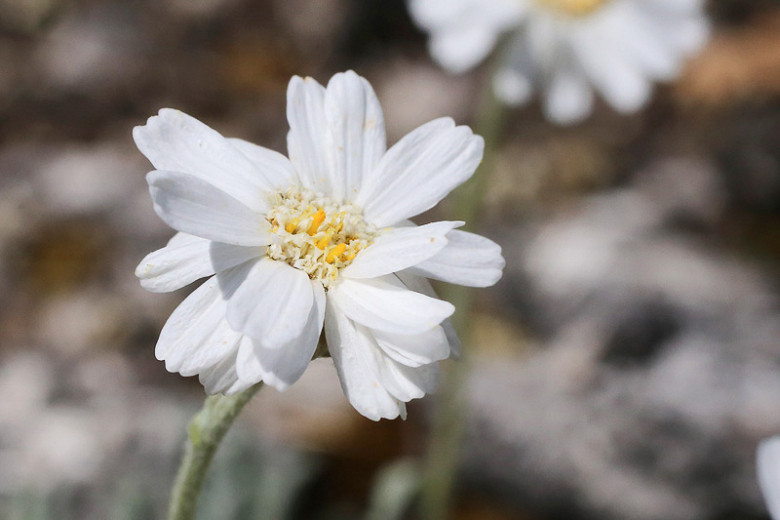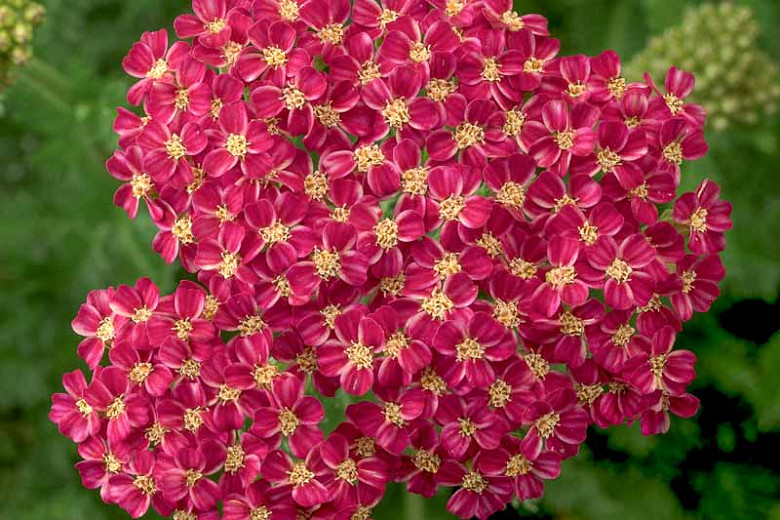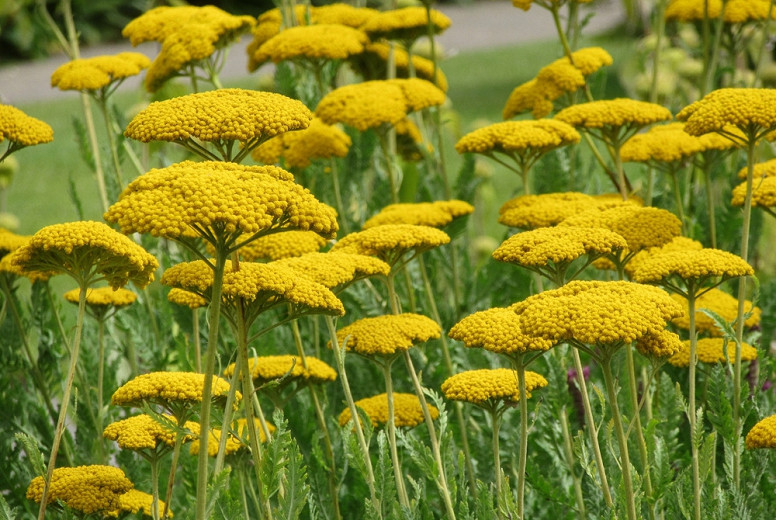Achillea (Yarrow)
Achillea is valued for its pleasantly fragrant, feathery foliage and its long-lasting, conspicuous, flat umbel flowers. Vital ingredient of herbaceous borders or prairie plantings, Achillea blooms for weeks from late spring to late summer, in a wide range of colors
Named after Achilles, hero of the Trojan Wars in Greek mythology, who used yarrow to heal the wounds of his soldiers, Achillea is valued for its pleasantly fragrant, feathery foliage and its long-lasting, conspicuous, flat umbel flowers. Vital ingredient of herbaceous borders, cottage gardens, meadows or prairies, Achillea typically blooms for weeks from late spring to late summer, in a wide range of colors including pinks, reds, creams, yellows and bicolor pastels.
- Easy care, drought, heat, humidity, deer and rabbit tolerant, Achillea are perennial plants treasured by gardeners!
- Grows up to 3 ft. tall (90 cm) and spreads 18-24 in. (45-60 cm) in sturdy, upright clumps.
- Achillea thrive in full sun in average, dry to medium moisture, well-drained soils. Light shade is tolerated but best coloring and flowering is obtained in full sun. Dry soils are also tolerated. Avoid rich, moist soils which would cause your Yarrow to get floppy or leggy. Good drainage is essential.
- Achillea are vital ingredients of herbaceous borders, cottage gardens, rock gardens, coastal garden or prairie planting. They are also valued for the excellent quality of their cut flowers, whether in bouquets or dried floral arrangements.
- Yarrows are a must if you are trying to attract butterflies!
- Deadheading will extend the bloom season and prevent your yarrow from spreading by seed. Cutting back after initial flowering will promote a rebloom. These plants self seed actively and can naturalize quickly if not monitored.
Achillea millefolium (Common Yarrow, Milfoil, Carpenter's Weed)
- Native to Europe, this plant has been cultivated since the 15th century.
- Grows up to 1-3 ft. tall (30-90 cm) and exhibits erect stems topped with flat, dense flower heads, about 3 in. wide (7 cm) complemented with strongly aromatic ferny-looking leaves
- Exists in a wide range of colors including pinks, reds, creams, yellows and bicolor pastels
- Valued in perennial borders, naturalized areas and for its cut flowers.
Achillea filipendulina (Tall Yarrow, Fern-Leaf Yarrow)
- Native to Asia, this Achillea has been cultivated since the 19th century and is among the tallest yarrows.
- May grow up to 2-4 ft tall (60-120 cm) and forms clumps of feathery, aromatic gray-green leaves from which arise erect stems crowned by large, dense, flat flower heads up to 5 in. wide (12 cm).
- Exists in a range of colors from golden yellow to sulfur yellow
- May be considered as a specimen plant or massed at the back of the perennial border or in naturalized areas. Excellent as cut flowers or in dried flower arrangements
Guide Information
| Hardiness | 3 – 9 |
|---|---|
| Heat Zones | 1 – 9 |
| Climate Zones | 1, 2, 3, 4, 5, 6, 7, 8, 9, 10, 11, 12, 13, 14, 15, 16, 17, 18, 19, 20, 21, 22, 23, 24, A1, A2, A3 |
| Plant Type | Perennials |
| Plant Family | Achillea – Yarrows |
| Exposure | Full Sun |
| Season of Interest | Spring (Late)Summer (Early,Mid,Late) |
| Height | 1' – 3' (30cm – 90cm) |
| Spread | 1' – 2' (30cm – 60cm) |
| Water Needs | Low |
| Maintenance | Low |
| Soil Type | Chalk, Loam, Sand |
| Soil pH | Acid, Alkaline, Neutral |
| Soil Drainage | Moist but Well-Drained, Well-Drained |
| Characteristics | Dried Arrangements, Cut Flowers, Fragrant, Showy |
| Tolerance | Deer, Drought, Rabbit, Dry Soil |
| Attracts | Bees, Butterflies |
| Landscaping Ideas | Beds and Borders |
| Garden Styles | Coastal Garden, Gravel and Rock Garden, Informal and Cottage, Prairie and Meadow |

